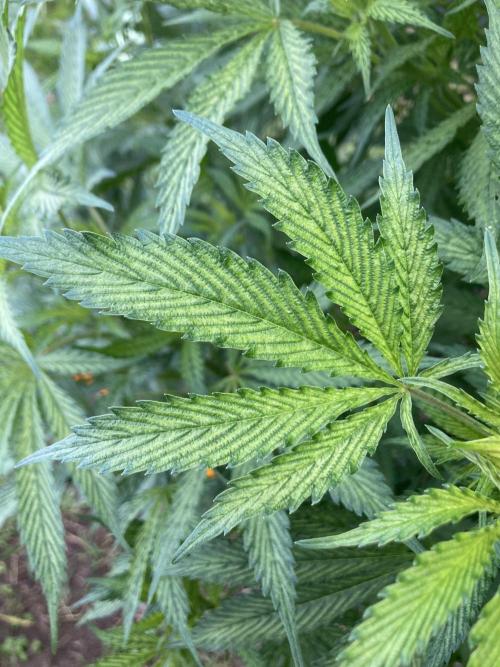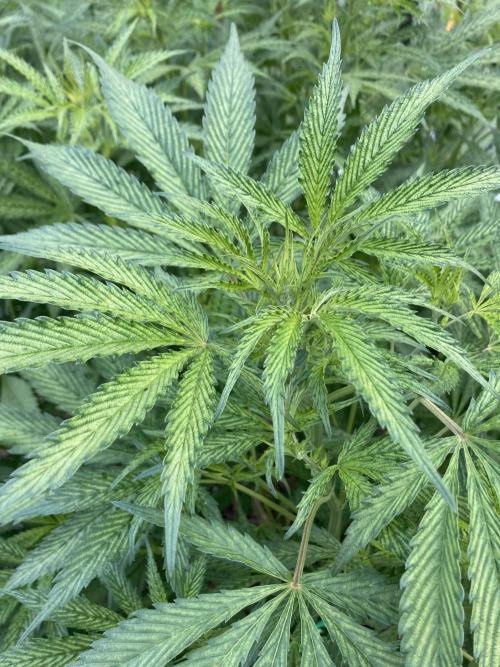The Grow Awards 2026 🏆
Plant issue
BlazeorDiestarted grow question 5mo ago
Can anyone tell me what the issue is with this plant would greatly appreciate it. I’ve hit it with everything I’ve got but no change
Open
likes
Answer
Alikibassissianswered grow question 5mo ago
Without know the feeding history, i genuinely recommend a reset. Just pure water for 5-10 days, if you see improvements from this, then lower your nutes. If you dont see any improvement after 10 days then i cant help without knowing more
likes
Complain
Hightai90answered grow question 5mo ago
Give It lots of water and wash the soil until the tun off Is clear and then start egain
likes
Complain
Organomananswered grow question 5mo ago
Iron deficiency maybe.
Remember...........what is showing in the leaves now, is a direct reflection of what was happening in the root zone 2-3 weeks ago...........anything you change will have quite a delay before leaf symptoms show differences.
likes
Complain
yan420answered grow question 5mo ago
Hard to say 100% without a diary or details,no pH, no medium info, nothing on your feeding schedule. So take this as an educated guess.
To me, this looks like early magnesium deficiency or a pH lockout causing interveinal chlorosis. The light green striping between veins is a classic sign. Could also be worsened by too much calcium or potassium if your feeding’s unbalanced.
If you’ve “hit it with everything,” it’s possible you’ve overcomplicated it. Sometimes less is more. I’d double-check your pH and runoff, back off the nutes a bit, and just focus on CalMag support at the proper pH.
But again, without a diary, this is all guesswork. ✌️
3 likes
Complain
Ultravioletanswered grow question 5mo ago
No diary, there are a number of nutrients that can cause interveinal chlorosis. All of which would be guesses without at least some Information to go on that could assist in diagnosis. High soil pH (alkaline conditions) can make iron and manganese, among other nutrients, less available to plants, even if they are present in the soil. So before doing anything check pH. Then if it's in range look to single.out a nutrient. Normally when it's nutrient relates alone the symptoms will present with old growth or new growth. If it's all over with no obvious starting point it's ph.
Iron:
Iron is crucial for chlorophyll synthesis and various enzyme functions. When iron is deficient, new leaves often show interveinal chlorosis, where the tissue between the veins turns yellow while the veins stay green.
Manganese:
Manganese is also involved in chlorophyll production and other enzymatic processes. Manganese deficiency can mimic iron deficiency, with yellowing between the veins. However, manganese deficiency can be distinguished by the fact that treating it with iron can worsen the chlorosis.
Magnesium:
Magnesium deficiency can also cause interveinal chlorosis, particularly in older leaves. Magnesium is a component of chlorophyll and plays a vital role in photosynthesis.
Zinc:
The chlorosis often appears on younger leaves first, as zinc is relatively immobile within the plant and doesn't readily move from older to newer growth.
Gluck with recovery.
1 like
Complain







